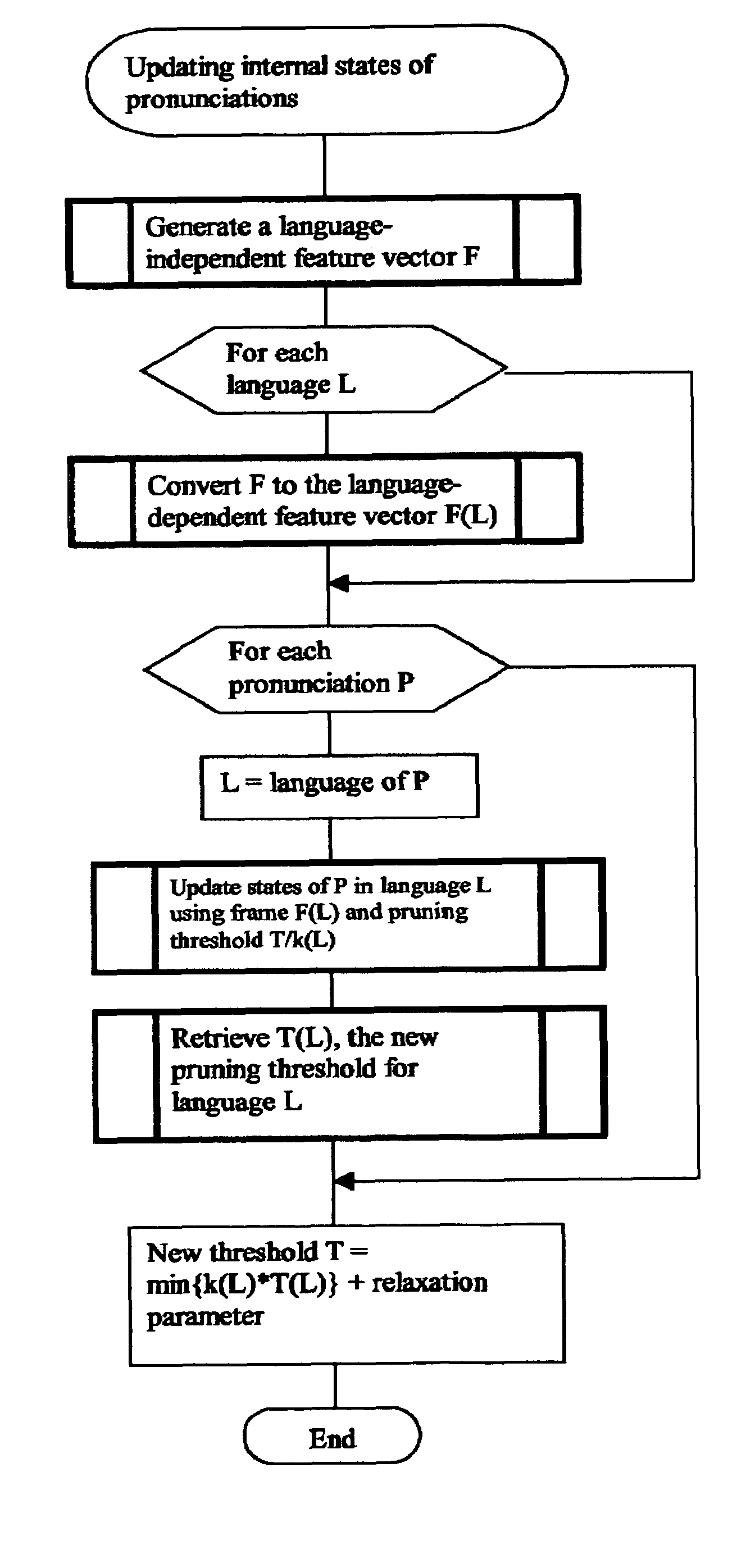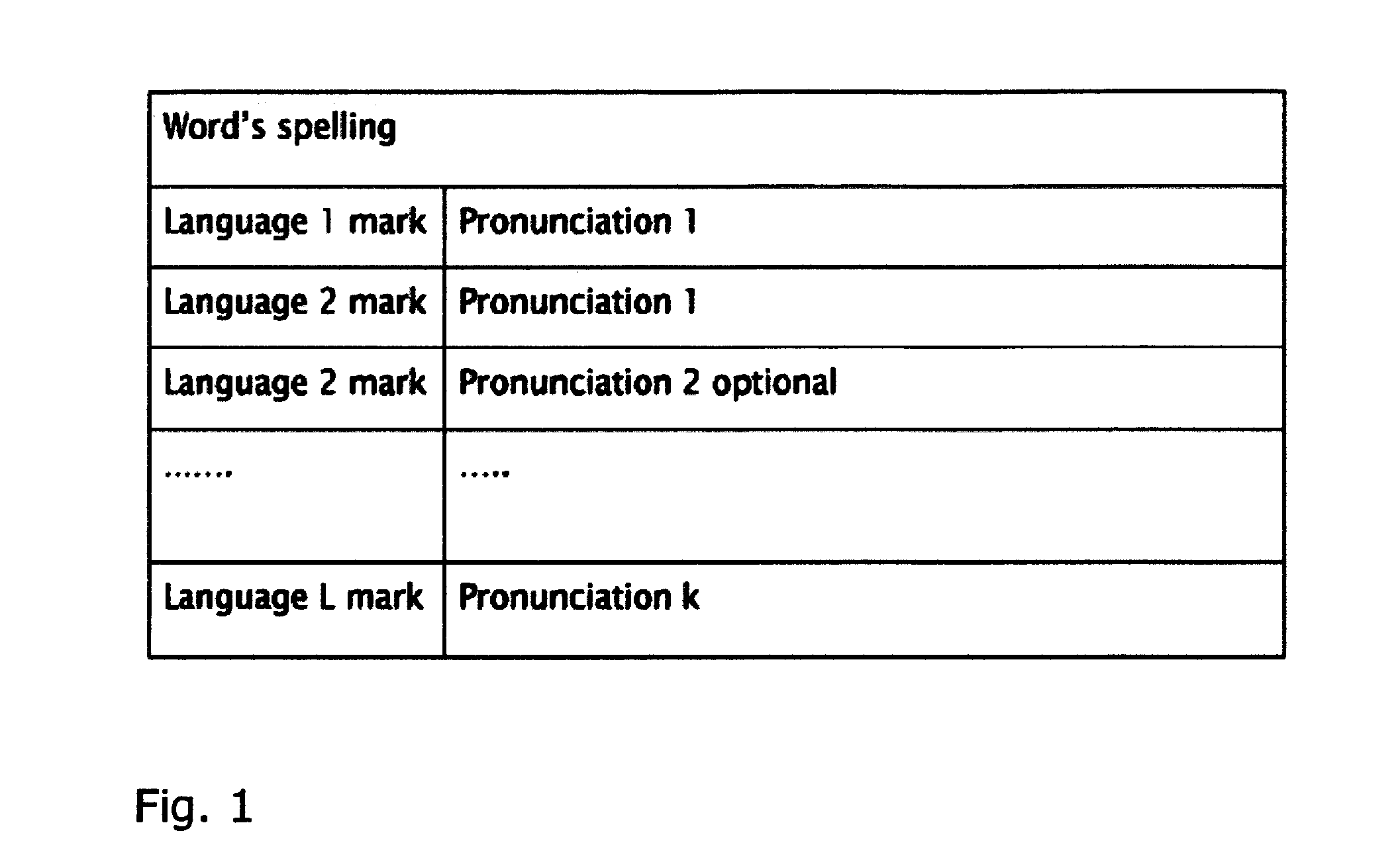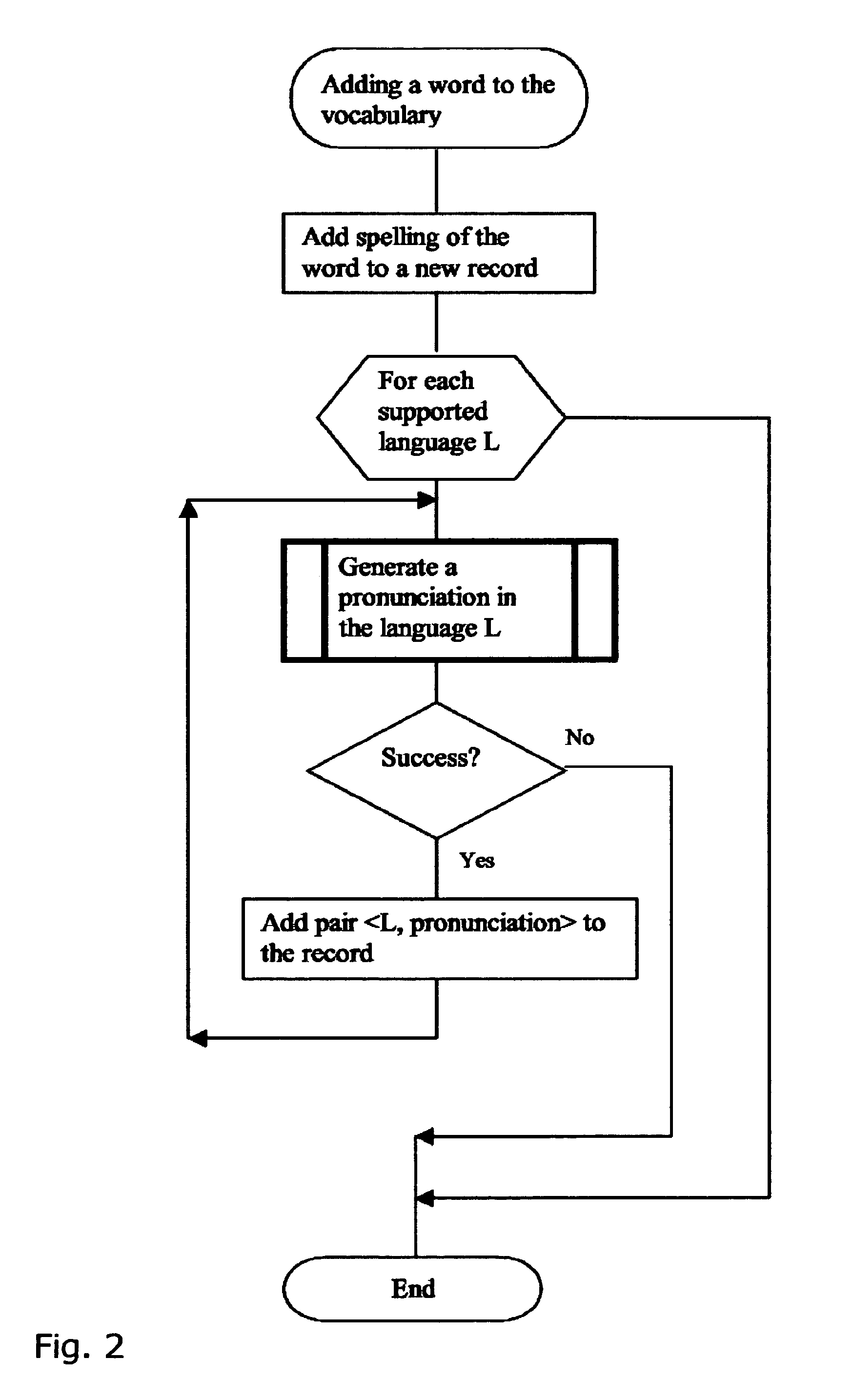Method of multilingual speech recognition by reduction to single-language recognizer engine components
a multilingual and engine technology, applied in the field of automatic speech recognition systems and methods, can solve the problems of not supporting multilingual utterances, not detecting languages automatically, and not predicting pronunciations
- Summary
- Abstract
- Description
- Claims
- Application Information
AI Technical Summary
Benefits of technology
Problems solved by technology
Method used
Image
Examples
example 1
[0052]Language-specific recognizers are equipped with class-based language models and the classes themselves are language-independent. In this case, language score penalties for the seeding pronunciation P are the score penalties for going from the class of word of P to the class of word of Q. For the language L(P) of P this is the from-language score (in the L(P) scale and computed with L(P) class transitions); for the language L(Q) of the pronunciation Q this is the to-language score (in the L(Q) scale and computed with L(Q) class transitions).
example 2
[0053]In all languages, the class model has a class for a generic foreign-language word. Alternatively, a commonly used “generic word” class may be used for a foreign-language word. In these two cases, classes need not be the same across languages.
[0054]In general, the MLD assumes that a language-specific facility exists for each language, which produces out-of-language score adjustment S_out and into-language score adjustment, S_in, given the pronunciations P, Q and the exit state E. (In applications where such a facility is not available, S_out and S_in are always zeros.) The MLD computes the score adjustment (in the MLD score scale) as a weighted average of S_out and S_in: w1*k(L(P))*S_out+w2*k(L(Q))*S_in, where the weight coefficients w1 and w2 are tuning parameters owned by the MLD. To be consistent with seeding a same-language pronunciation, the sum of the weights should be a 1.
[0055]In addition, the MLD uses a “meta-language model” that provides a score adjustment S_MLD=S_MLD...
PUM
 Login to View More
Login to View More Abstract
Description
Claims
Application Information
 Login to View More
Login to View More - R&D
- Intellectual Property
- Life Sciences
- Materials
- Tech Scout
- Unparalleled Data Quality
- Higher Quality Content
- 60% Fewer Hallucinations
Browse by: Latest US Patents, China's latest patents, Technical Efficacy Thesaurus, Application Domain, Technology Topic, Popular Technical Reports.
© 2025 PatSnap. All rights reserved.Legal|Privacy policy|Modern Slavery Act Transparency Statement|Sitemap|About US| Contact US: help@patsnap.com



